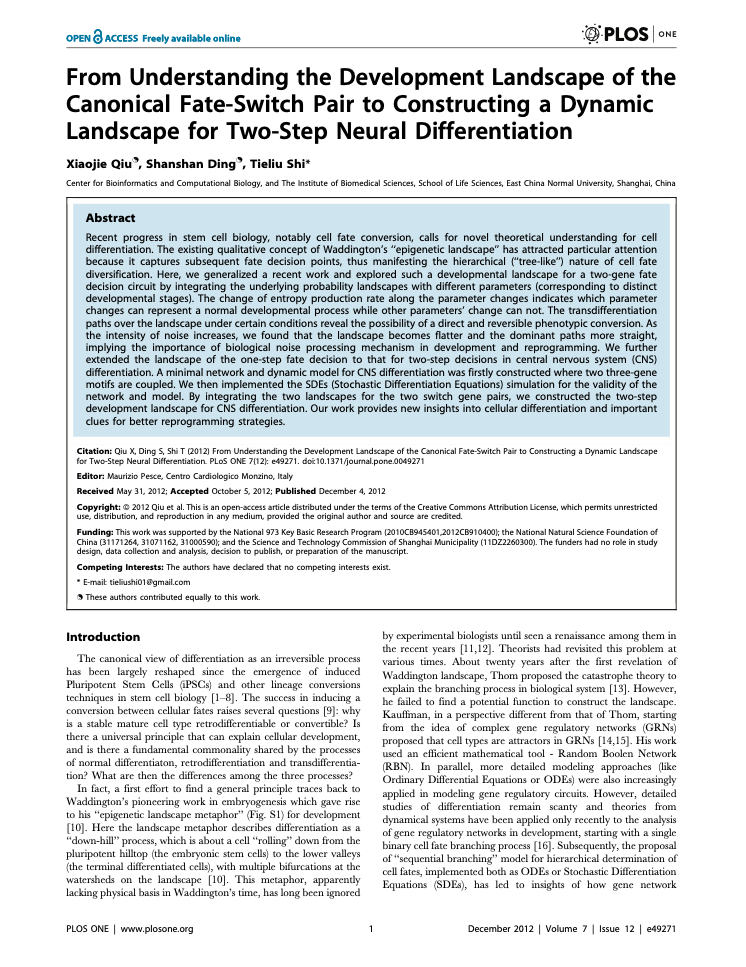
From understanding the development landscape of the canonical fate-switch pair to constructing a dynamic landscape for two-step neural differentiation
Recent progress in stem cell biology, notably cell fate conversion, calls for novel theoretical understanding for cell differentiation. The existing qualitative concept of Waddington’s “epigenetic landscape” has attracted particular attention because it captures subsequent fate decision points, thus manifesting the hierarchical (“tree-like”) nature of cell fate diversification. Here, we generalized a recent work and explored such a developmental landscape for a two-gene fate decision circuit by integrating the underlying probability landscapes with different parameters (corresponding to distinct developmental stages). The change of entropy production rate along the parameter changes indicates which parameter changes can represent a normal developmental process while other parameters’ change can not. The transdifferentiation paths over the landscape under certain conditions reveal the possibility of a direct and reversible phenotypic conversion. As the intensity of noise increases, we found that the landscape becomes flatter and the dominant paths more straight, implying the importance of biological noise processing mechanism in development and reprogramming. We further extended the landscape of the one-step fate decision to that for two-step decisions in central nervous system (CNS) differentiation. A minimal network and dynamic model for CNS differentiation was firstly constructed where two three-gene motifs are coupled. We then implemented the SDEs (Stochastic Differentiation Equations) simulation for the validity of the network and model. By integrating the two landscapes for the two switch gene pairs, we constructed the two-step development landscape for CNS differentiation. Our work provides new insights into cellular differentiation and important clues for better reprogramming strategies.